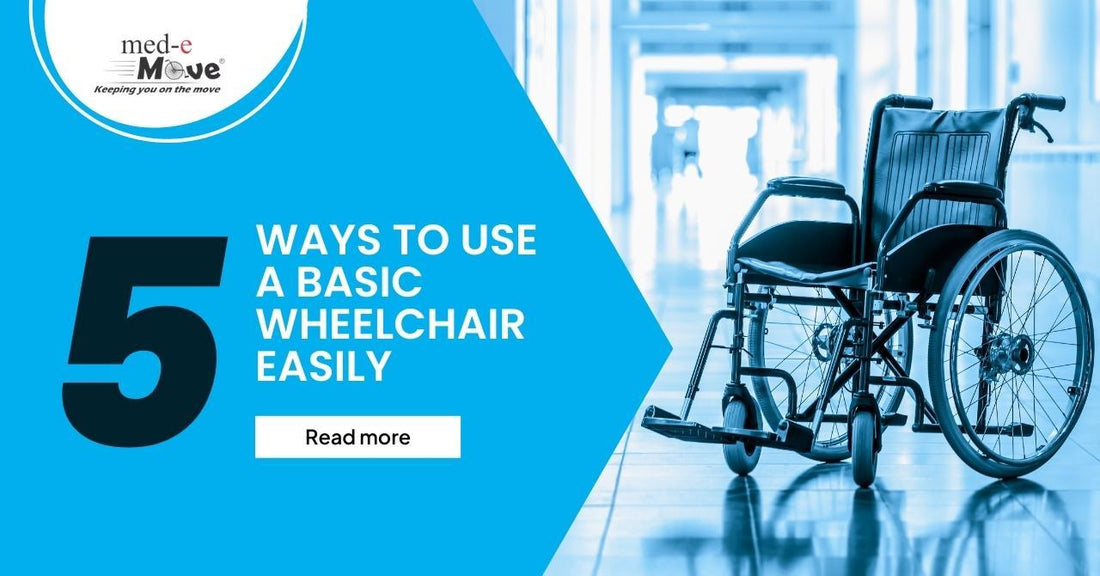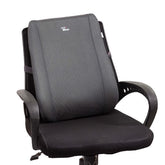5 Ways to Use a Basic Wheelchair Easily
If you are a wheelchair user as well as an independent user, it may at first appear tiresome to use a manual chair. Some of these suggestions can aid you while using a basic wheelchair by easing certain situations because moving ourselves with our own weight takes a specific amount of weight.
Perform warm-up activities to adjust to the hand motions.
If your doctor has advised you to move around in a wheelchair and you have never moved your chair independently, it is likely that the numerous hand movements and holding your weight while moving the chair have caused pain in your arms and hands. To avoid arm soreness and to help your body become more flexible, perform hand and warm-up exercises.
In the bathrooms, use the railings to stop sliding.
Many regular wheelchair users fail to use the railings as assistance. Using handrails gives you the most necessary support and prevents extra issues of sliding, falling, etc. because the bathroom surfaces are typically slippery.
Don't apply the brake quickly.
When on the main path, estimate the surface at a glance and be aware of when to slow down your basic wheelchair. A sudden stop might cause your muscles to experience high strain, which can cause muscle changes or air cracks. Keep an eye on the path and strongly avoid sudden breaks.
Consciously lock the chair when you are conversing midway
It is possible to forget to stop the basic wheelchair in the middle of a conversation, we can forget to break the chairs. Tell your caregivers to keep the breaks engaged, or be cautious and lock the wheelchair if you are self-riding one. Re-injury is possible with just one unanticipated movement.
Use a grade aid or hill holder.
Use the external device known as a grade assist or hill holder to keep your basic wheelchair from slipping backwards while navigating upward-curving pathways and ascending ramps. As they were made to assist the wheelchair mechanism, they support both of the back wheels and are simple to manually fix and remove.
If a caregiver is assisting you in using a standard wheelchair:
-
If you have a one-leg injury, stay comfortable, keep your legs firmly propped up on the footrest, and don't let the other leg swing loose. There is a good likelihood that when you swing your common leg, it will collide with the door, the corners of the wall, or the uneven surface of the pathway, causing muscle strain that unnecessarily results in another injury.
-
Request that your caretaker applies the brakes. When you realise there is a pause, keep your body rigid rather than letting it sag. It aids in preventing a draw towards the front of your body that could result in pointless motions and muscle strain.
Conclusion
It takes effort to maintain continuous movement in a basic wheelchair. The greatest option for using a wheelchair outdoors and over longer distances is an electric wheelchair. However, manual wheelchairs or standard wheelchairs are appropriate for residential use. Simply put, getting emotionally and physically ready requires a little more work.
Related Products
-
Basic Mag WheelchairThe Basic Mag Wheelchair is a lightweight and durable mobility solution designed for individuals who need reliable support and comfort for everyday movement. Equipped with sturdy mag wheels, this wheelchair offers smooth maneuverability on various surfaces, ensuring easy handling both indoors and outdoors. Its...
- ₹ 5,700.00
₹ 9,000.00- ₹ 5,700.00
- Unit price
- / per
-
Basic Electric WheelchairUpgrade your mobility with the MEDEMOVE Basic Electric Wheelchair. With a professional design and advanced technology, this wheelchair offers ease of movement and independence for those with mobility limitations. Featuring a lightweight yet durable frame, this wheelchair is perfect for everyday use and can...
- ₹ 58,000.00
₹ 90,000.00- ₹ 58,000.00
- Unit price
- / per
-
Premium Electric Wheelchair with Electro Magnetic BrakesThe Premium Electric Wheelchair with Electro Magnetic Brakes is a high-performance, advanced mobility solution designed for individuals who require reliable support, comfort, and ease of use. With cutting-edge technology and durable construction, this electric wheelchair provides enhanced maneuverability, stability, and safety for users with...
- ₹ 134,991.00
₹ 149,990.00- ₹ 134,991.00
- Unit price
- / per
-
Transit Wheelchair with Detachable Footrest & ArmrestThe Transit Wheelchair with Detachable Footrest & Armrest is a versatile and practical mobility solution designed to offer both comfort and convenience for users and caregivers. Built with high-quality materials, this wheelchair provides a lightweight yet durable design that ensures smooth maneuverability, whether indoors...
- ₹ 12,150.00
₹ 13,500.00- ₹ 12,150.00
- Unit price
- / per
-
Wheelchair with Hard / Folding CushionThe MEDEMOVE Wheelchair with Folding Cushion is a high-quality mobility solution designed for comfort, convenience, and portability. This wheelchair features a specially designed folding cushion that provides enhanced comfort while ensuring easy storage and transport. Perfect for individuals who need both reliable mobility and...
- ₹ 9,450.00
₹ 10,500.00- ₹ 9,450.00
- Unit price
- / per
-
Coccyx CushionThe MEDEMOVE Coccyx Cushion is a specially designed support pillow aimed at providing relief from tailbone pain, pressure sores, and discomfort associated with prolonged sitting. Its ergonomic design features a cut-out section at the rear of the cushion to alleviate pressure on the coccyx...
- ₹ 1,980.00
₹ 2,200.00- ₹ 1,980.00
- Unit price
- / per
-
Round Ring Pillow, Universal SizeThe MEDEMOVE Round Ring Pillow is a versatile and ergonomic support cushion designed to provide comfort and relief for individuals experiencing pressure sores, pain, or discomfort from sitting for extended periods. Its unique round ring shape evenly distributes weight, alleviating pressure on sensitive areas...
- ₹ 1,584.00
₹ 1,760.00- ₹ 1,584.00
- Unit price
- / per
-
Back Rest for Chair and Backpain - BlackThe Backrest for Back Pain is a specially designed support cushion that helps alleviate discomfort and pain caused by poor posture, muscle strain, or chronic back conditions. Whether you're sitting at a desk, driving, or relaxing at home, this backrest offers targeted support to...
- ₹ 1,710.00
₹ 1,900.00- ₹ 1,710.00
- Unit price
- / per
-
Black
-
Gray













